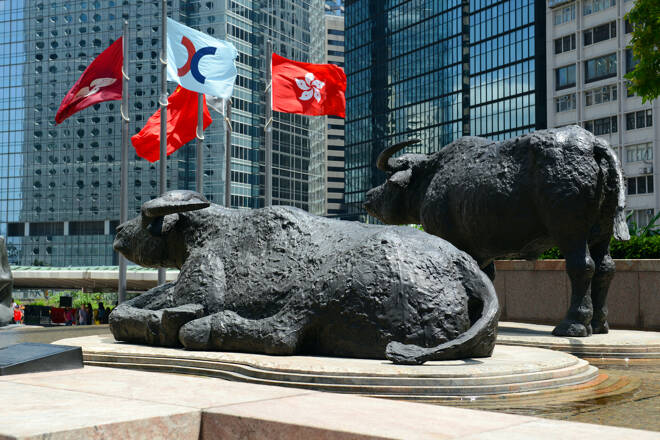Advertisement
Advertisement
Hang Seng Index, ASX200, Nikkei 225: Earnings to Test Sentiment
By:
It is a relatively quiet day for the Hang Seng and the broader Asian markets. However, we can expect a market reaction from overnight corporate earnings.
Key Insights:
- It was a mixed Thursday for the Asian equity markets, with the Hang Seng seeing further losses while the ASX 200 bucked a bearish trend.
- Economic indicators from Australia and Japan drew interest, while the Japanese government sent the Nikkei south.
- However, it is a quieter day ahead for the Asian markets, with inflation numbers from Japan in focus.
It was a mixed Thursday session for the Hang Seng Index and the broader Asian markets. The Hang Seng Index extended its losing streak to three sessions on concerns over the China economy, with the Nikkei seeing heavy losses. However, the ASX 200 bucked the trend.
Trade data from Japan and Australian employment numbers were better than expected. However, the employment numbers from Australia fueled bets on an RBA rate hike, while the Japanese government overshadowed the trade data.
There were no US economic indicators from Wednesday to influence, with housing sector numbers having a limited impact on market risk sentiment.
Looking toward the Friday session, US economic indicators and corporate earnings left the US equity markets with a mixed session. US jobless claims supported bets on a US soft landing, with initial jobless claims falling from 237k to 228k. The less influential Philly Fed Manufacturing Index rose from -13.7 to -13.5 in July.
Tesla (TSLA), Netflix (NFLX), and Goldman Sachs (GS) earnings weighed on US equity markets. However, Johnson & Johnson (JNJ) upwardly revised its annual profit forecast to support the Dow.
The NASDAQ Composite Index and the S&P 500 saw losses of 2.05% and 0.68%, respectively, while the Dow gained 0.47%.
This morning, the Asian economic calendar is on the lighter side. However, hotter-than-expected inflation numbers from Japan would weigh on the Nikkei.
ASX 200
The ASX 200 gained 0.02% on Thursday, with hotter than expected employment numbers capping the upside on hawkish RBA bets. In June, the Australian unemployment rate held steady at 3.5% versus a forecasted 3.6%. Employment jumped by 32.6k. Economists forecast Australian employment to increase 15.0k.
The big-4 had a mixed Thursday session. Westpac Banking Corp (WBC) and The Commonwealth Bank of Australia (CBA) saw gains of 0.27% and 0.57%, respectively. However, ANZ Group (ANZ) and The National Australia Bank (NAB) ended the day with losses of 0.43% and 0.14%, respectively.
Mining stocks also had a mixed session. Rio Tinto (RIO) and Fortescue Metals Group (FMG) ended the day with gains of 0.36% and 1.35%, respectively. However, BHP Group Ltd (BHP) and Newcrest Mining (NCM) ended the day down 0.11% and 0.36%, respectively.
Oil stocks also saw red, with Woodside Energy Group (WDS) and Santos Ltd (STO) falling by 0.50% and 0.13%, respectively.
Hang Seng Index
The Hang Seng Index saw red for the third consecutive day, falling by 0.13% on China growth concerns. Despite a string of disappointing economic indicators from China, the PBoC left Loan Prime Rates unchanged on Thursday.
Considering the main Index components, Tencent Holdings Ltd (HK:0700) and Alibaba Group Holding Ltd (HK:9988) saw losses of 0.06% and 0.94%, respectively.
However, bank stocks had a bullish session. HSBC Holdings PLC gained 0.87%, with The Industrial and Commercial Bank of China (HK:1398) and China Construction Bank (HK: 0939) rising by 0.56% and 0.47%, respectively.
CNOOC (HK: 0883) ended the day flat.
Nikkei 225
(For demonstrative purposes only)
The Nikkei 225 slid by 1.23% on Thursday, with the Japanese government outlook on inflation weighing. On Thursday, Japan’s government forecast inflation to sit at 2.6% this fiscal year, well above the BoJ’s 2% target, while revising its growth forecast from 1.5% to 1.3%. In January, the government forecast inflation to hit 1.7% for the fiscal year.
The government forecasts overshadowed better-than-expected trade data from Japan.
The banks had a bearish session. Sumitomo Mitsui Financial Group (8316) and Mitsubishi UFJ Financial Group fell by 0.09% and 1.29%, respectively.
Looking at the main components, Fast Retailing Co (9983) declined by 1.6%, with Sony Corp (6758) and Tokyo Electron Limited (8035) ending the day down 1.36% and 1.33%, respectively. SoftBank Group Corp. (9984) slipped by 0.81%, while KDDI Corp (9433) gained 0.14%.
Check out our economic calendar for economic events.
About the Author
Bob Masonauthor
With over 28 years of experience in the financial industry, Bob has worked with various global rating agencies and multinational banks. Currently he is covering currencies, commodities, alternative asset classes and global equities, focusing mostly on European and Asian markets.
Advertisement
